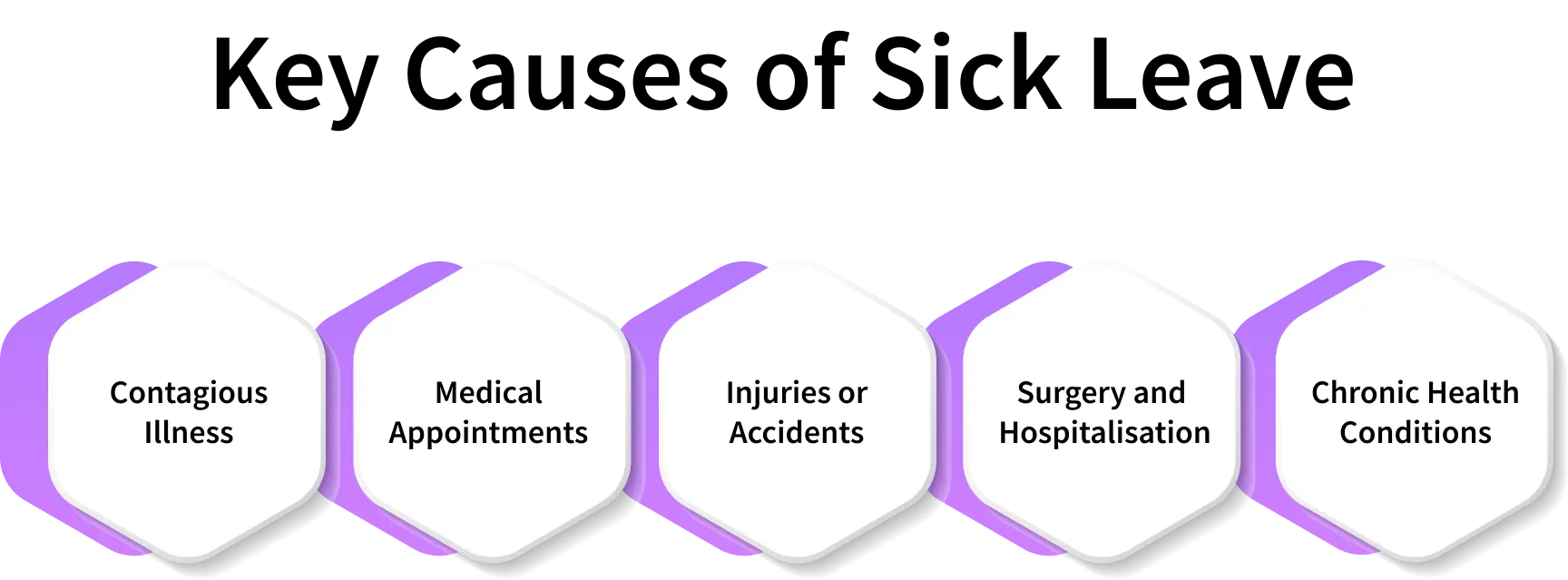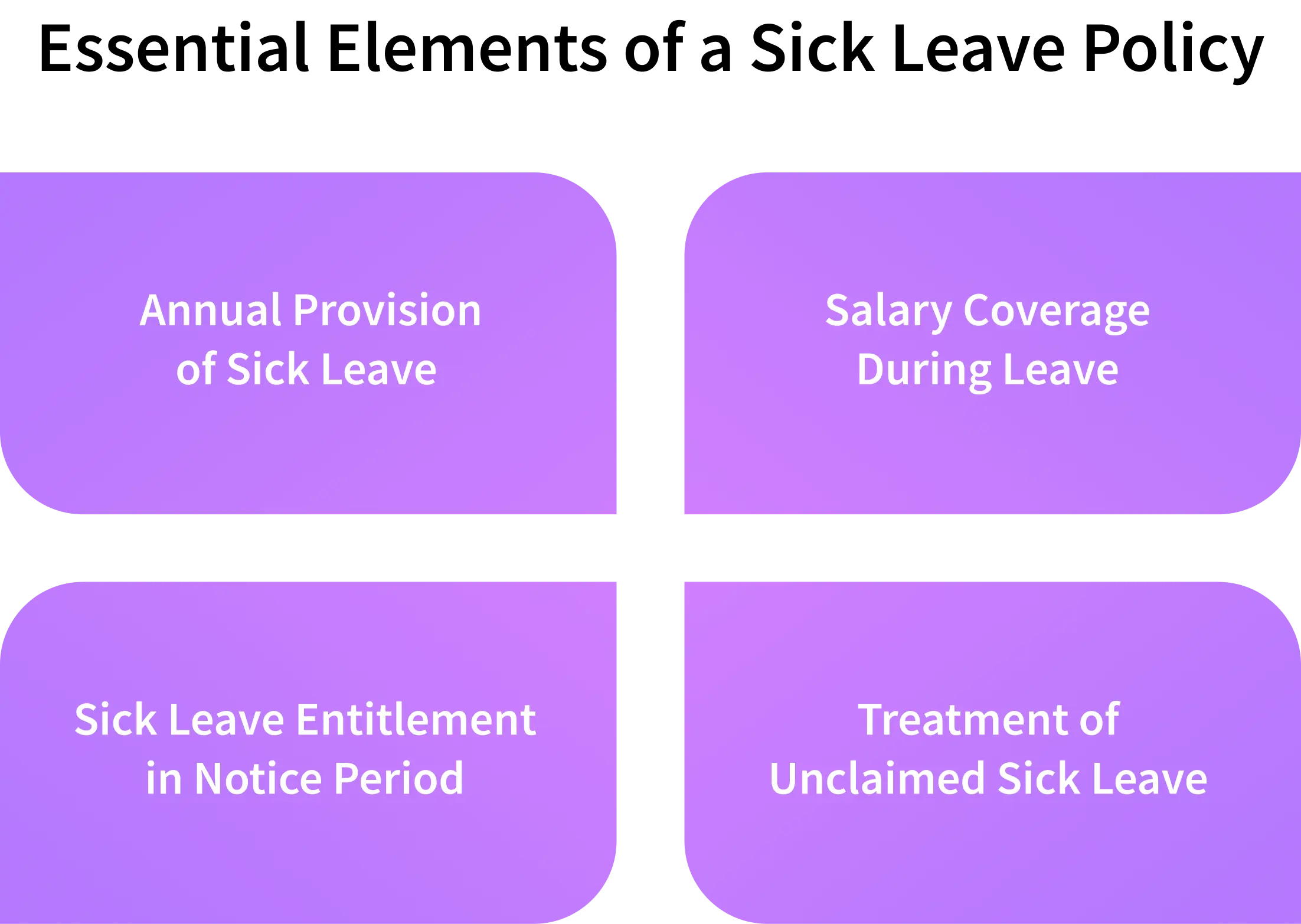Sick leave, also called SL Leave, can be defined as paid or unpaid days off given to employees when they are sick, injured or taking medical recovery. It offers employees an opportunity to focus on their health, and at the same time, not to lose their jobs. This leave serves as a protection to individuals and workplaces.
Health leave is an essential part of employee welfare, as it provides time for rest and recovery while ensuring financial support during absence. Recognising that good health directly impacts productivity, organisations implement structured leave policies not only to support employees but also to meet legal and compliance requirements.
Entitlements vary in India, by state, sector, and contracts. The Shops and Establishments Acts , the Factories Act or the government service laws determine the rules of sick leaves. Usually, the employees are entitled to 5 or 12 days of paid sick leave annually, based on the employer or state policies.
SL Full Form is Sick Leave, which refers to an officially permitted absence of duty that employees are given whenever they cannot carry out their responsibilities because of sickness, injury, medical checkups or recovery of health-related complications.
Sick leave allows employees to take time off when they are ill or dealing with a health condition. Under an organisation’s sick leave policy, employees can formally request leave whenever such situations arise. The provisions of that policy will regulate the number of days of leave to be taken, whether salary will be paid in full or partially, whether a medical certificate is needed, and the application process. The employee ceases coming to work to be on leave within the approved terms.
A well-structured sick leave system benefits both employees and employers. Employees get the opportunity to recover without the fear of losing their job, while employers can maintain a healthier workplace and manage absences through a fair and organised leave process. Employee sick leave is taken as a rule over a calendar year or fiscal year , and it can be reset or carried over according to policy.
Although some companies claim to offer unlimited sick leave, it is usually capped in practice. Most organisations follow limits set by their internal policies or by state-specific Shops and Establishments Acts. For example, private sector employees are usually entitled after a period of probation or after working a specified minimum time.
Yes, sick leave is mandatory in India. Labour laws, including the Shops and Establishments Acts of various states, require employers to provide a minimum number of paid sick leave days to their employees. While the exact number may vary depending on the state or company policy , every registered organisation is expected to offer it as part of employee welfare and compliance standards.
Some typical causes of sick leave are listed below and can be considered universal in most policies. Organisations use such lists to establish eligibility, as well as to handle leave properly.

Sick leaves usually occur when employees have contagious diseases such as flu, COVID-19 or viral fever. Not only do these illnesses interfere with the ability to work of an employee, but they also may be transmitted in the workplace, and hence leave is vital to the health and safety of all employees.
The most common causes of sick leave requests are routine or special medical appointments. Such visits can include dental checkups, eye checkups or special checkups. To ensure that preventive care and prompt treatment are of paramount priority, organisations normally permit employees to go on leave to attend such appointments.
They may be non-work-related injuries or accidents that prevent employees from working. In this case, sick leave offers sufficient rest without worrying about lost earnings. Companies frequently demand medical evidence to sanction such absences, especially when a long rest or therapy is needed.
Sick leave should be longer for workers who have surgery or are hospitalised. This consists of big and small operations and aftercare services. The documentation of other forms, like hospital discharge summaries or medical certificates, is required to take legitimate leave when recovering after medical procedures.
Such chronic diseases as asthma, arthritis or diabetes flare-ups may sometimes necessitate temporary leave. The sick leave policies handle such cases to help employees deal with long-term health conditions. Organisations can request regular medical check-ups to check on the effects on working duties.
An effective sick leave policy gives the right answers regarding the entitlements, payment, the requirement of the notice period and what happens to the unused leave. To ensure that employees are treated fairly, compliantly and well, employers should package transparent sick leaves. These are some of the main points that ought to be incorporated in a policy to make it clear, consistent and compliant.

The structure of the annual entitlements to sick leave must be clear in every policy. Rather than indirect directives, organisations should declare the method of calculating leave, to whom leave is entitled, and whether half-day or full-day leave should be granted. This creates a standard system throughout the company.
How salary should be treated for employees taking sick leave should be defined. An effective policy will show how the absence will be counted as paid time off , partial coverage, or unpaid leave. Through this documentation, employers can assure employees of fairness and avoid uncertainty.
The operations of sick leave should be indicated in policies if an employee is giving notice. Certain companies will permit the accrued leaves to be used, while others might limit them. Communicating these rules clearly brings about transparency and less conflict in cases of an employment transition.
The unused sick leaves must be considered in the policy itself. The employers can determine whether it lapses, is held in suspense or is restricted in encashments. The predetermination of the approach gives the employees and the management a mutual understanding of what is expected.
No, compassionate leave does not get included in sick leave. Compassionate leave (also known as bereavement leave ) is another type of leave awarded when an employee requires some time off to take care of family issues, the death of their family members or other related occurrences.
Although both compassionate and sick leave are time-off types, they have different applications. Sick leaves refer to personal health, illness or medical recovery, and compassionate leaves relate to emotional or family crises. The distinction between them in terms of policies ensures that they are not mixed up and that every type of leave is used correctly.